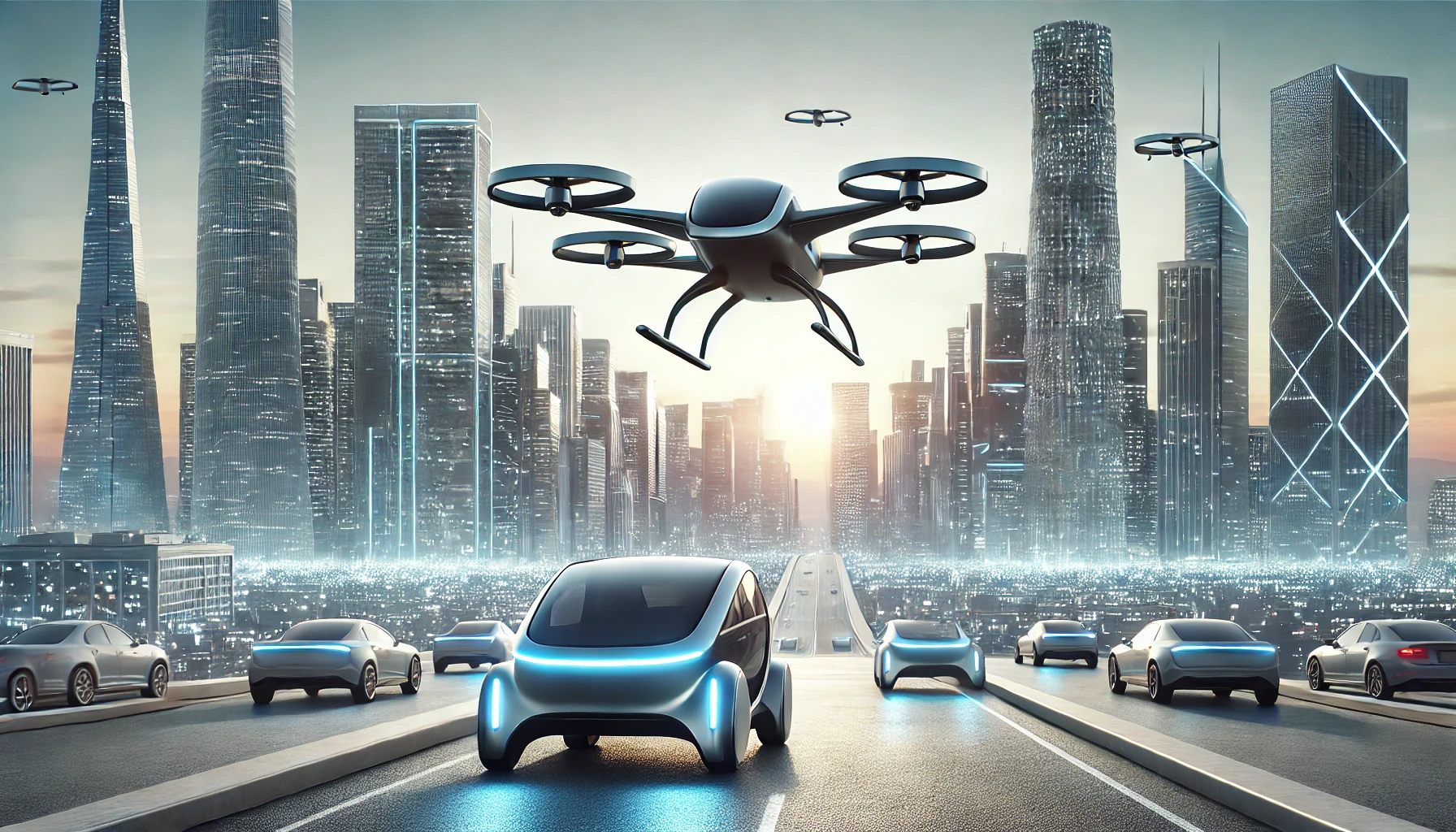Alef Flying Car: The Future of Flying Cars
Alef Flying Car: Flying cars have long captured the imagination of sci-fi enthusiasts and futurists alike. From Alef Flying Cars to VTOL technology, the once far-fetched dream of zipping through the air instead of enduring bumper-to-bumper traffic is fast becoming a reality. With companies racing to introduce electric flying cars and autonomous flying cars, we stand on the brink of a transportation revolution.
In this blog post, we’ll explore the exciting developments in the future of flying cars, focusing on Alef’s innovations, air car technology, and what the world can expect by 2024. We will also examine the role of urban air mobility, how flying cars will be integrated into our cities, and the anticipated cost of flying cars in the coming years.
Alef Flying Car: A Groundbreaking Step into the Future
The Alef Flying Car is not just an innovation; it is a promise of what could be a completely transformed transportation ecosystem. Founded in 2015, Alef Aeronautics has designed a vehicle that’s as comfortable driving on the road as it is taking off into the skies.
Key Features of the Alef Flying Car
- VTOL Technology: Vertical Takeoff and Landing (VTOL) is one of the cornerstones of the Alef Flying Car. Unlike traditional airplanes, which require long runways, VTOL vehicles can take off vertically, making them ideal for urban environments where space is limited.
- Electric Propulsion: Alef’s vehicle is entirely electric, which means it aligns with the global push for cleaner, more sustainable transportation solutions. Electric flying cars could drastically reduce carbon emissions compared to traditional modes of transport.
- Autonomous Capabilities: While fully autonomous flying cars are still in development, Alef’s model incorporates elements of automation, promising a future where flying cars require minimal pilot input.
- On-Road Capability: Unlike other flying car designs, the Alef can drive on regular roads, allowing for seamless transitions between driving and flying.
These features make the Alef a unique player in the world of personal flying vehicles.
Flying Car 2024: What Can We Expect?
As we approach 2024, the flying car future looks brighter than ever. Several companies, including Alef, are preparing to bring their models to market, and regulations are beginning to catch up with the technology. But what exactly can we expect from flying cars in 2024?
Electric Flying Cars: Cleaner and More Efficient
The push for electric flying cars isn’t just about efficiency—it’s about sustainability. As climate change becomes an ever-pressing issue, the shift from fossil fuel-powered vehicles to electric ones is crucial. The rise of electric air car technology ensures that flying cars will not only offer a faster mode of transport but also a greener one. According to a study from the International Council on Clean Transportation, electric vehicles, including electric flying cars, emit up to 50% less carbon than traditional internal combustion engines.
By 2024, we can expect flying cars, particularly those like the Alef, to have gained more significant market penetration, with more models available for commercial use.
Urban Air Mobility: How Flying Cars Will Transform Cities
One of the most exciting developments surrounding flying cars is their potential to revolutionize urban air mobility. With cities growing more congested and traffic becoming more unbearable, flying cars provide a viable solution to easing gridlock.
Advantages of Urban Air Mobility
- Time Savings: Flying cars, particularly autonomous flying cars, will dramatically reduce travel time, especially in urban environments. What once took hours could be reduced to mere minutes, especially during peak traffic.
- VTOL Vehicles and Space Efficiency: As mentioned, VTOL cars like the Alef don’t require long runways, making them ideal for cities with limited space.
- Reduced Congestion: With cars taking to the skies, cities could experience less congestion on the ground, reducing stress for those who still prefer traditional road travel.
Flying Car Cost: How Much Will It Cost to Own a Flying Car?
One of the biggest questions people have is, “How much will a flying car cost?” As you might expect, the cost of flying cars is relatively high at the moment. Initial estimates for models like the Alef Flying Car are around $300,000, which puts them in the same price range as high-end luxury cars and private aircraft.
However, as more companies enter the market and production scales, the cost is expected to decrease. By 2030, analysts predict that prices could be more accessible to the general public, especially as air car technology advances and becomes more widespread.
For a deep dive into the technology behind flying cars and what drives their pricing, you can visit credible sources like IEEE Spectrum.
Autonomous Flying Cars: A New Era of Self-Driving Air Travel
While autonomous flying cars are still in the developmental phase, many experts believe they are the future of personal transportation. Autonomous technology eliminates human error, which is a leading cause of accidents. Companies like Alef are integrating automation into their designs, allowing for personal flying vehicles to be both self-driving and self-flying.
Challenges and Opportunities in Autonomous Flying
- Regulations: Currently, there are significant regulatory hurdles that need to be overcome. Governments will need to establish air traffic rules for autonomous vehicles.
- Safety: Ensuring the safety of autonomous flying cars is another crucial factor. With advanced AI and sensor technologies, flying cars will need to navigate complex airspaces, avoid other vehicles, and ensure passenger safety at all times.
Despite these challenges, companies are optimistic that by 2024, we’ll see more autonomous flying cars in the sky, laying the groundwork for a fully autonomous transportation system in the future.
Personal Flying Vehicles: The Next Frontier in Air Travel
The concept of personal flying vehicles is no longer just a vision of the future. With advancements in VTOL technology and electric flying cars, personal air travel is set to take off—literally. Whether it’s for commuting to work or traveling long distances, flying cars will offer unprecedented flexibility.
How Personal Flying Vehicles Will Change Your Commute
- Door-to-Door Travel: Unlike helicopters or planes, personal flying vehicles can take off from your driveway, fly to your destination, and then transition to road travel.
- Affordability: While currently out of reach for most consumers, flying car costs are expected to decrease, bringing personal air travel into the mainstream within the next decade.
For a comprehensive understanding of personal flying vehicles and how they might change the way we live and travel, check out Regent Studies’ detailed articles on technology and innovation.
The Flying Car Future Is Now
The future of flying cars is no longer a distant dream. With innovations like the Alef Flying Car, advancements in urban air mobility, and the rise of electric flying cars, the transportation landscape is set for a dramatic transformation by 2024. As autonomous flying cars become more sophisticated and air car technology continues to improve, we can expect flying cars to play a significant role in reducing urban congestion, improving sustainability, and offering unprecedented convenience.
By keeping a close eye on the developments of companies like Alef and staying informed about changes in regulations and technology, you’ll be ready for the flying car future—one where the skies become the new highways.
For more insights into technological advancements, visit IEEE Spectrum or explore the resources available on Regent Studies.




